#native sioux
Text
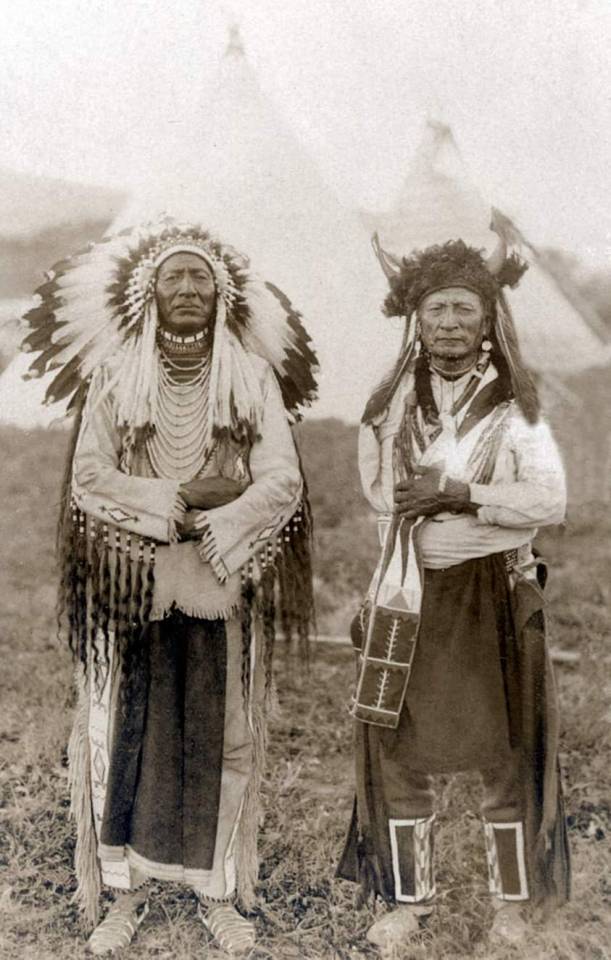
Chief Big Spring and Wolf Eagle (aka Buffalo Chief of the Blackfoot) stand in front of tipis ...
Date : 1930-1940
Big Spring, left, wearing war bonnet and traditional regalia, stands next to Wolf Eagle (aka Buffalo Chief of the Blackfoot) wearing buffalo horn headdress and traditional regalia. Tipis in background.Note by Dyck on verso "Big Spring Blackfoot."
Native Americans
Siksika Indians
McCracken Research Library, Buffalo Bill Center of the West
74 notes
·
View notes
Text
"Cody Two Bears, a member of the Sioux tribe in North Dakota, founded Indigenized Energy, a native-led energy company with a unique mission — installing solar farms for tribal nations in the United States.
This initiative arises from the historical reliance of Native Americans on the U.S. government for power, a paradigm that is gradually shifting.
The spark for Two Bears' vision ignited during the Standing Rock protests in 2016, where he witnessed the arrest of a fellow protester during efforts to prevent the construction of the Dakota Access Pipeline on sacred tribal land.
Disturbed by the status quo, Two Bears decided to channel his activism into action and create tangible change.
His company, Indigenized Energy, addresses a critical issue faced by many reservations: poverty and lack of access to basic power.
Reservations are among the poorest communities in the country, and in some, like the Navajo Nation, many homes lack electricity.
Even in regions where the land has been exploited for coal and uranium, residents face obstacles to accessing power.
Renewable energy, specifically solar power, is a beacon of hope for tribes seeking to overcome these challenges.
Not only does it present an environmentally sustainable option, but it has become the most cost-effective form of energy globally, thanks in part to incentives like the Inflation Reduction Act of 2022.
Tribal nations can receive tax subsidies of up to 30% for solar and wind farms, along with grants for electrification, climate resiliency, and energy generation.
And Indigenized Energy is not focused solely on installing solar farms — it also emphasizes community empowerment through education and skill development.
In collaboration with organizations like Red Cloud Renewable, efforts are underway to train Indigenous tribal members for jobs in the renewable energy sector.
The program provides free training to individuals, with a focus on solar installation skills.
Graduates, ranging from late teens to late 50s, receive pre-apprenticeship certification, and the organization is planning to launch additional programs to support graduates with career services such as resume building and interview coaching...
The adoption of solar power by Native communities signifies progress toward sustainable development, cultural preservation, and economic self-determination, contributing to a more equitable and environmentally conscious future.
These initiatives are part of a broader movement toward "energy sovereignty," wherein tribes strive to have control over their own power sources.
This movement represents not only an economic opportunity and a source of jobs for these communities but also a means of reclaiming control over their land and resources, signifying a departure from historical exploitation and an embrace of sustainable practices deeply rooted in Indigenous cultures."
-via Good Good Good, December 10, 2023
#indigenous#native americans#first nations#indigenous rights#tribal sovereignty#solar energy#solar power#solar panels#renewable energy#green energy#sioux#sioux nation#sustainability#climate hope#electrification#united states#hope#good news
2K notes
·
View notes
Text

Gertrude Käsebier :: Zitkala Sa, Sioux Indian and activist, ca. 1898 | src NMAH
view more Zitkala-sa by Käsebier on wordPress
#gertrude kasebier#zitkala sa#sioux#native american#pictorial portrait#pictorialist portrait#pictorialism#photosecession#gertrude käsebier#portrait#women artists#women photographers#beauty#gertrude simmons#red bird
1K notes
·
View notes
Text
#talkin#tik tok#white supremacy#lakota#native americans#indigenous americans#cultural appropriation#standing rock sioux tribe
5K notes
·
View notes
Text
⚞Chief Red Shirt⚟
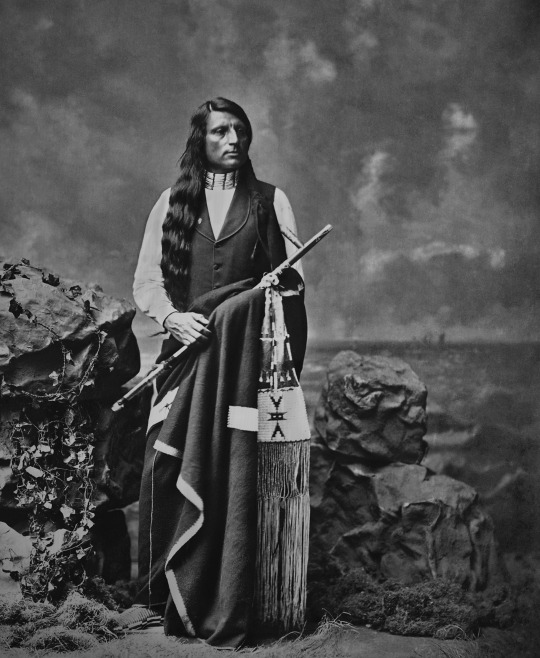
Chief Red Shirt - Oglala Sioux

Red Shirt (Oglala Lakota: Ógle Ša in Standard Lakota Orthography) (1847–1925) was an Oglala Lakota chief, warrior and statesman.
Chief Red Shirt camped with Crazy Horse and the rest of the Oglala at the Little Big Horn. The Oglala camp was next to the Cheyenne camp near the bottom of what is now known as Last Stand Hill. Red Shirt supported Crazy Horse during the Great Sioux War of 1876-1877 and the Ghost Dance Movement of 1890, and was a Lakota delegate to Washington in 1880.

Dakota delegation to Washington, D.C., Left to right, Red Dog, Little Wound, John Bridgeman (interpreter), Red Cloud, American Horse and Red Shirt. June, 1880
Chief Red Shirt wore his hair to represent peace and war. One side of his hair was wrapped to indicate he was ready for peace, the other side was worn loose indicating his readiness for war. This was done when he traveled with Chief Red Cloud to Washington D.C.

Red Shirt surrendered with Crazy Horse in 1877. After the surrender he moved to an area that is now known as Red Shirt, SD. Red Shirt was one of the first Wild Westers with Buffalo Bill's Wild West and a supporter of the Carlisle Native Industrial School. Red Shirt became an international celebrity Wild Westing with Buffalo Bill's Wild West and his 1887 appearance in England captured the attention of Europeans and presented a progressive image of Native Americans.
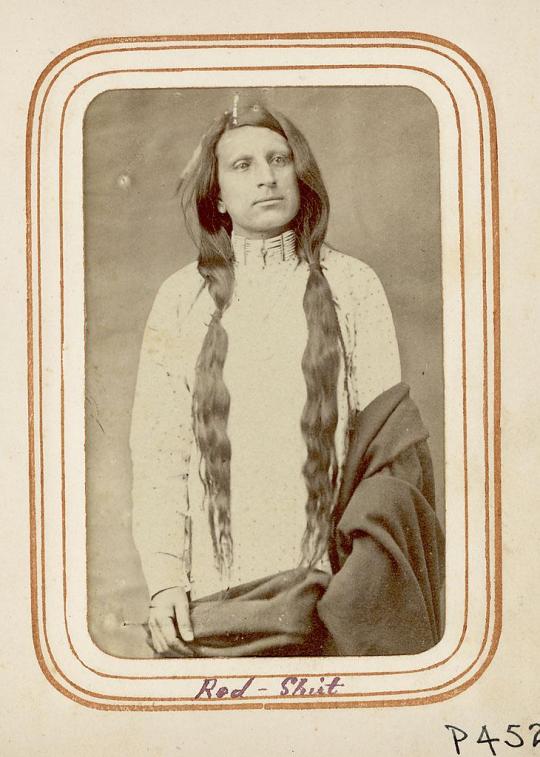

Red Shirt in Buffalo Bill's Wild West Show
On March 31, 1887, Chief Red Shirt, Chief Blue Horse and Chief American Horse and their families boarded the SS State of Nebraska in New York City, leading a new journey for the Lakota people when they crossed the ocean to England on Buffalo Bill's first international to perform at the Golden Jubilee of Queen Victoria and tour through Birmingham, Salford and London over a five–month period. The entourage consisted of 97 Indians, 18 buffaloes, 2 deer, 10 elk, 10 mules, 5 Texas steers, 4 donkeys, and 108 horses. Buffalo Bill treated Native American employees as equals with white cowboys. Wild Westers received good wages, transportation, housing, abundant food and gifts of clothing and cash from Buffalo Bill at the end of each season.
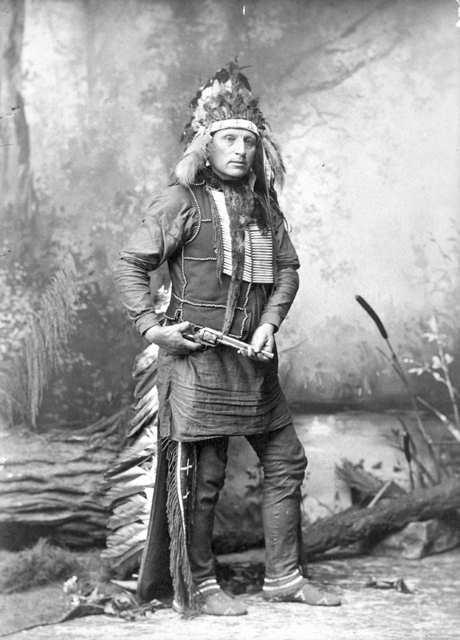
Photo from London - Red Shirt was lionized by the British press and his handsome features and stately bearing caused reporters to hang on his every word. Queen Victoria adored Chief Red Shirt and reportedly said after meeting him, "I know a real prince when I see him."

William F. "Buffalo Bill" Cody, Rosa Bonheur, Chief Rocky Bear, Chief Red Shirt, William "Broncho Bill" Irving, Roland Knoedler, and Benjamin Tedesco in front of Cody's Tent at the Paris Exposition Universelle - 1889
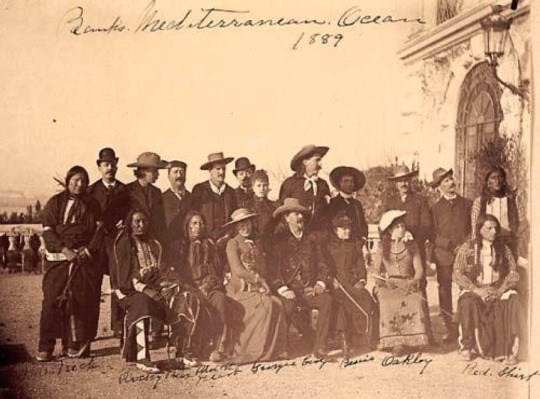
Another photo of Red Shirt - this time with Cody's company somewhere in Italy, 1890. Front row: No Neck, Rocky Bear, Black Heart, Georgie Duffy, Cody, Bessie Farrell, Annie Oakley, Red Shirt. Others in back row: Buck Taylor (fifth from right), Johnny Baker (fourth from right), Carter Couturier, advertising agent(?) (second from right), Has No Horses (far right)


Chief Red Shirt's rifle & scabbard.🔼 - Details 🔽




Chief Red Shirt was a Wild Wester for over thirty years - St. Louis World's Fair, 1904.
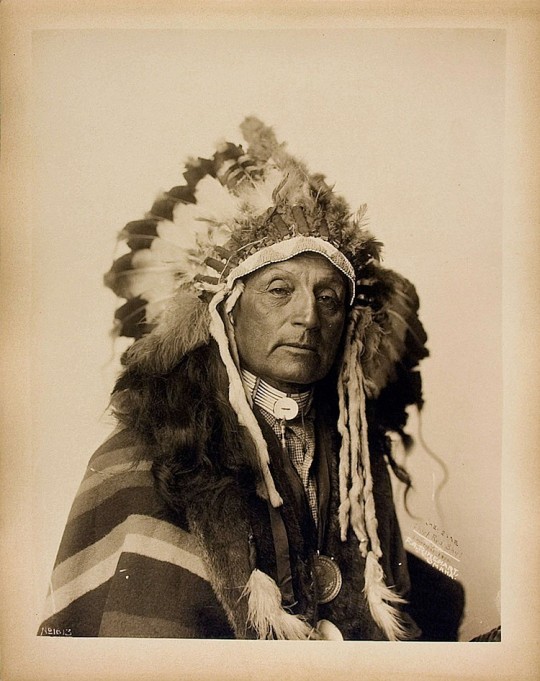
Chief Red Shirt (Ógle Ša) - 1847–1925
#indigenous#Sioux#native american#red shirt#Chief Red Shirt#buffalo bill#queen victoria#crazy horse#Little Big Horn#Oglala#ghost dance movement#lakota sioux#lakota#ogle sa#wild wester
299 notes
·
View notes
Text
Native Tribe To Get Back Land 160 Years After Largest Mass Hanging In US History
Upper Sioux Agency state park in Minnesota, where bodies of those killed after US-Dakota war are buried, to be transferred
— Associated Press | Sunday 3 September, 2023

The Upper Sioux Agency State Park near Granite Falls, Minnesota. Photograph: Trisha Ahmed/AP
Golden prairies and winding rivers of a Minnesota state park also hold the secret burial sites of Dakota people who died as the United States failed to fulfill treaties with Native Americans more than a century ago. Now their descendants are getting the land back.
The state is taking the rare step of transferring the park with a fraught history back to a Dakota tribe, trying to make amends for events that led to a war and the largest mass hanging in US history.
“It’s a place of holocaust. Our people starved to death there,” said Kevin Jensvold, chairman of the Upper Sioux Community, a small tribe with about 550 members just outside the park.
The Upper Sioux Agency state park in south-western Minnesota spans a little more than 2 sq miles (about 5 sq km) and includes the ruins of a federal complex where officers withheld supplies from Dakota people, leading to starvation and deaths.
Decades of tension exploded into the US-Dakota war of 1862 between settler-colonists and a faction of Dakota people, according to the Minnesota Historical Society. After the US won the war, the government hanged more people than in any other execution in the nation. A memorial honors the 38 Dakota men killed in Mankato, 110 miles (177km) from the park.
Jensvold said he has spent 18 years asking the state to return the park to his tribe. He began when a tribal elder told him it was unjust Dakota people at the time needed to pay a state fee for each visit to the graves of their ancestors there.

Native American tribe in Maine buys back Island taken 160 years ago! The Passamaquoddy’s purchase of Pine Island for $355,000 is the latest in a series of successful ‘land back’ campaigns for indigenous people in the US. Pine Island. Photograph: Courtesy the writer, Alice Hutton. Friday 4 June, 2021
Lawmakers finally authorized the transfer this year when Democrats took control of the house, senate and governor’s office for the first time in nearly a decade, said State Senator Mary Kunesh, a Democrat and descendant of the Standing Rock Nation.
Tribes speaking out about injustices have helped more people understand how lands were taken and treaties were often not upheld, Kunesh said, adding that people seem more interested now in “doing the right thing and getting lands back to tribes”.
But the transfer also would mean fewer tourists and less money for the nearby town of Granite Falls, said Mayor Dave Smiglewski. He and other opponents say recreational land and historic sites should be publicly owned, not given to a few people, though lawmakers set aside funding for the state to buy land to replace losses in the transfer.
The park is dotted with hiking trails, campsites, picnic tables, fishing access, snowmobiling and horseback riding routes and tall grasses with wildflowers that dance in hot summer winds.
“People that want to make things right with history’s injustices are compelled often to support action like this without thinking about other ramifications,” Smiglewski said. “A number, if not a majority, of state parks have similar sacred meaning to Indigenous tribes. So where would it stop?”
In recent years, some tribes in the US, Canada and Australia have gotten their rights to ancestral lands restored with the growth of the Land Back movement, which seeks to return lands to Indigenous people.

‘It’s a powerful feeling’: the Indigenous American tribe helping to bring back buffalo 🦬! Matt Krupnick in Wolakota Buffalo Range, South Dakota. Sunday 20 February, 2022. The Wolakota Buffalo Range in South Dakota has swelled to 750 bison with a goal of reaching 1,200. Photograph: Matt Krupnick
A National Park has never been transferred from the US government to a tribal nation, but a handful are Co-managed with Tribes, including Grand Portage National Nonument in northern Minnesota, Canyon de Chelly National Monument in Arizona and Glacier Bay National Park in Alaska, Jenny Anzelmo-Sarles of the National Park Service said.
This will be the first time Minnesota transfers a state park to a Native American community, said Ann Pierce, director of Minnesota State Parks and trails at the natural resources department.
Minnesota’s transfer, expected to take years to finish, is tucked into several large bills covering several issues. The bills allocate more than $6m to facilitate the transfer by 2033. The money can be used to buy land with recreational opportunities and pay for appraisals, road and bridge demolition and other engineering.
Chris Swedzinski and Gary Dahms, the Republican lawmakers representing the portion of the state encompassing the park, declined through their aides to comment about their stances on the transfer.
— The Guardian USA
#Minnesota#U.S. 🇺🇸 News#World 🌎 News#Native Tribes#Land Buy Back#The Upper Sioux Agency State Park#Burial Sites of Dakota People#United States 🇺🇸 | Failed Treaties#Native Americans#Kevin Jensvold | Upper Sioux Community#US-Dakota War of 1862#Dakota Men Killed | Mankato#Minnesota Historical Society#State Senator | Mary Kunesh | Democrat | Descendant | Standing Rock Nation#Granite Falls#Mayor Dave Smiglewski#US 🇺🇸 | Canada 🍁 🇨🇦 | Australia 🇦🇺#Ancestral Lands Restored#Land Back Movements#Grand Portage National Nonument#Canyon de Chelly National Monument#Glacier Bay National Park#Ann Pierce | Minnesota State Parks#Chris Swedzinski | Gary Dahms | Republican Lawmakers
258 notes
·
View notes
Photo

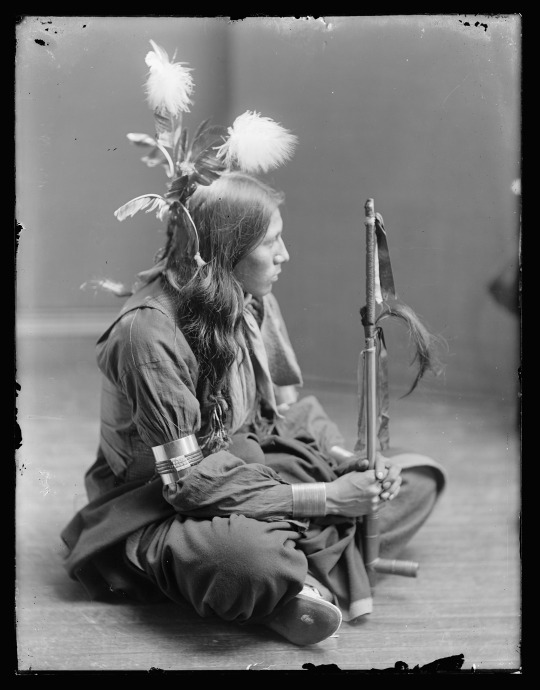


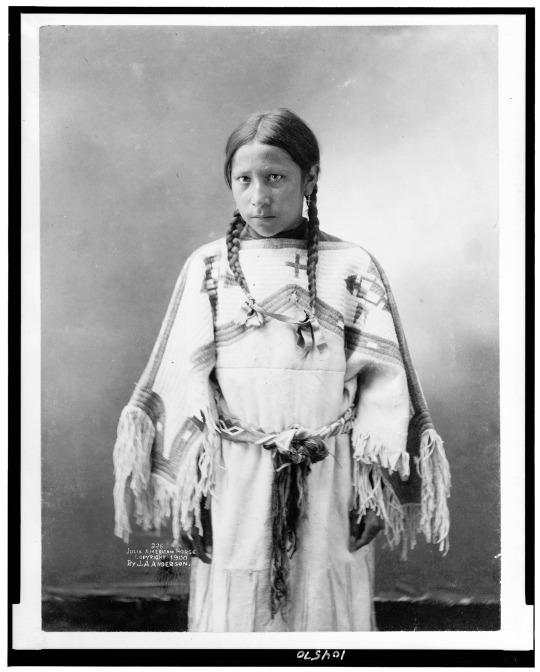
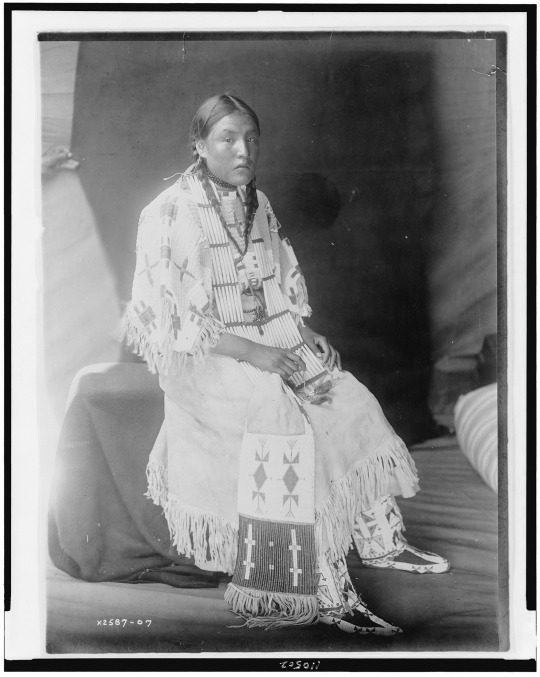
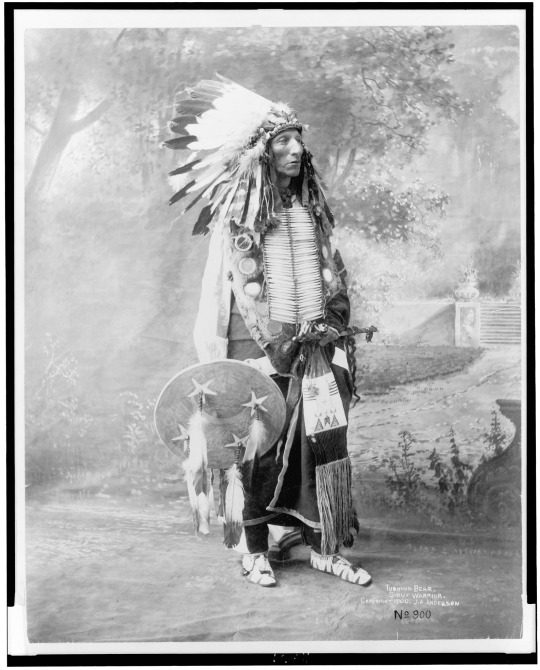

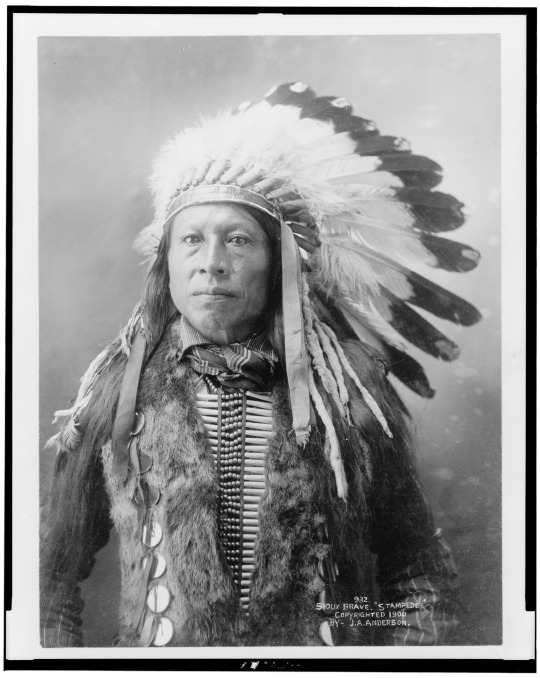
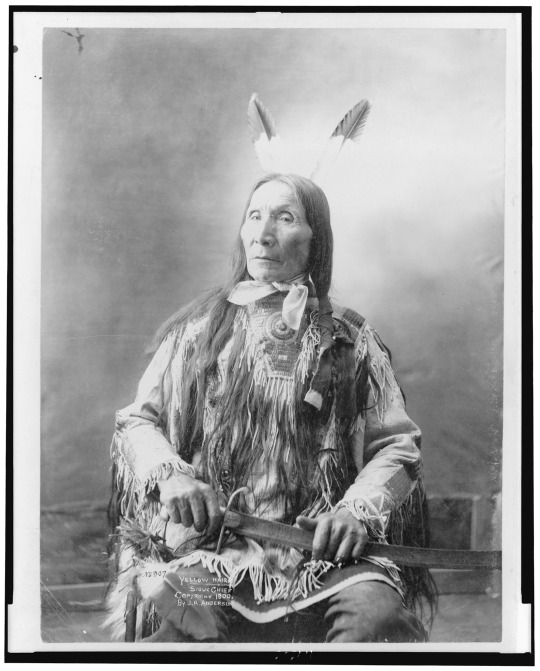
November is National American Indian Heritage Month and we at OUAT have chosen to celebrate the Dakota Sioux with a series of portraits and sceneries from ca 1899 -1910.
From top to bottom:
Iron White Man.
William Frog.
Susie Shot in the Eye.
Crow Dog.
Julia American Horse.
Red Elk Woman.
Turning Bear.
[Unknown] Sioux child.
Stampede.
Chief Yellow Hair.
See more from our Native American collection here.
676 notes
·
View notes
Text
The Black Hills of South Dakota have been central to the Lakota people’s #culture for over 10,000 years. To walk through them is to walk through native American history.
118 notes
·
View notes
Text

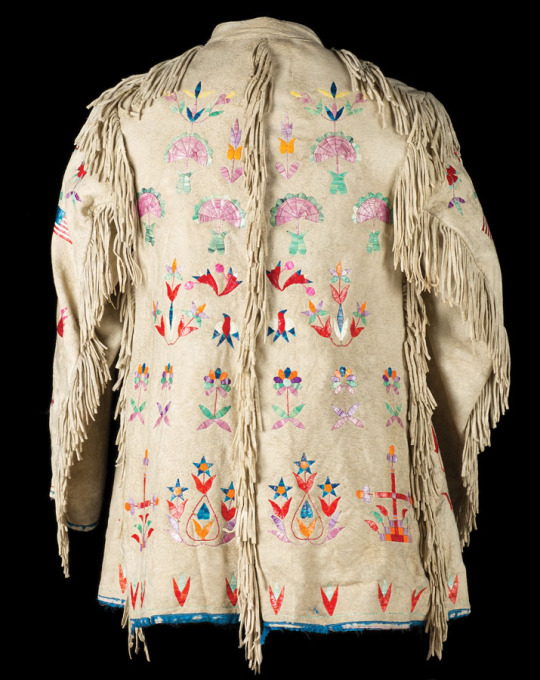
Sioux Quilled Jacket
A very seldom seen example of an early Scout jacket. With finely executed quilled designs in bright colorful designs and symbols including birds, flowers, crosses and crossed American flags on the sleeves. Trimmed in fringe, with remnants of blue silk trim at the edges. Cotton lining. Wonderful fringe along the arms, shoulders and down the center of the back. Circa late 19th century, 30" tall, 15" wide, 22" sleeves. Front shows fading to quillwork, but the back is bright and beautiful.
Old West Events
262 notes
·
View notes
Photo

Sioux woman's dress, 1920s-50s.
333 notes
·
View notes
Photo
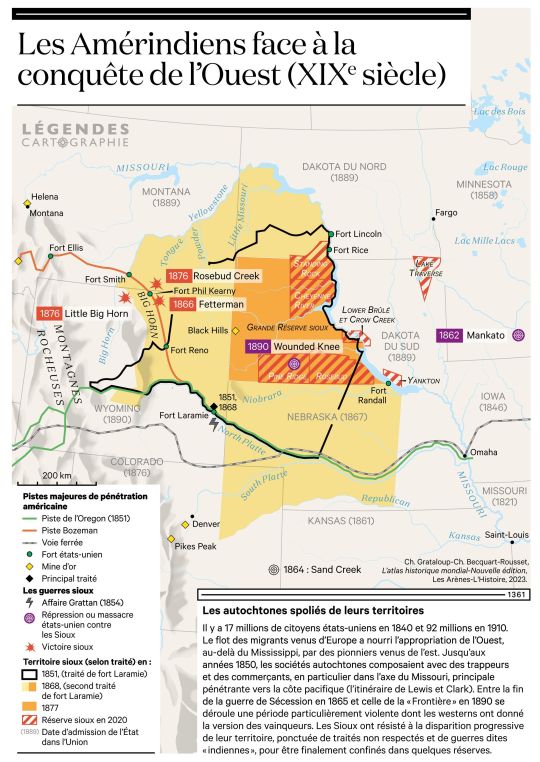
The dispossession of Sioux territory, 19th century.
From the new edition of Atlas historique mondial by C. Grataloup and Ch. Becquart-Rousset.
by LegendesCarto
56 notes
·
View notes
Text
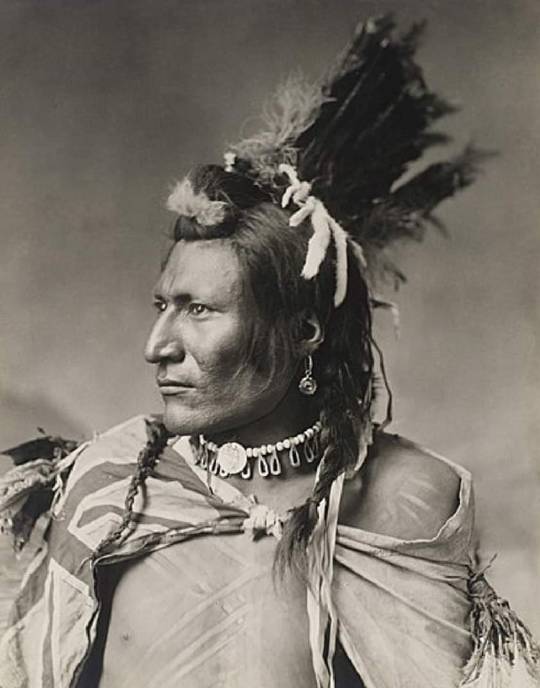
Native American ... Blackfoot ... c. 1884 ...
Old Brass (?), Siksika, Blackfoot ... (note the Union Jack over his shoulder) - Alex Ross - 1884 ...
Courtesy of #Native Sioux
218 notes
·
View notes
Text
#indigenous#native american#good news#solar power#standing rock#standing rock sioux tribe#lakota#indigenized energy#green energy#renewable energy#solar energy
43 notes
·
View notes
Text

Hinhan Duta (Scarlet Owl) or Hin-Kan-Du-Ta (Red Owl), Dakota, in Partial Native Dress and Holding War Club - Shindler - 1858
25 notes
·
View notes
Text



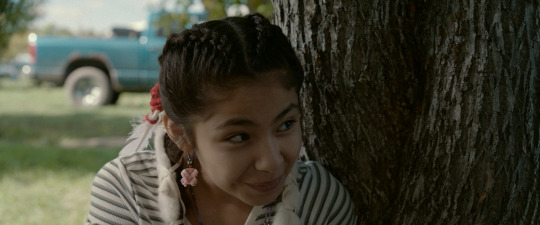
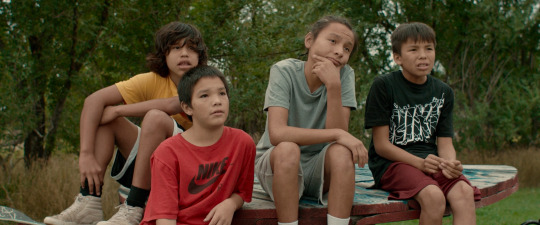

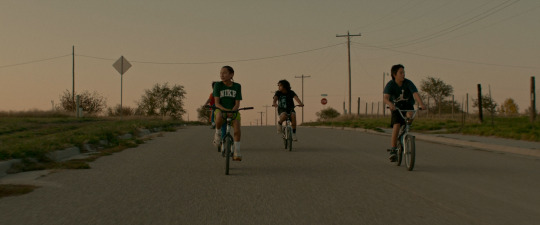
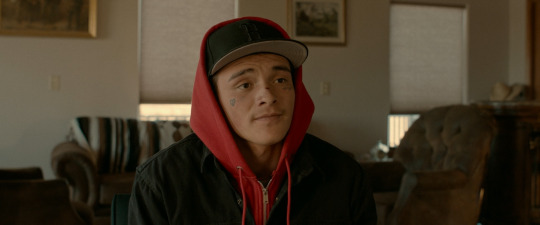


War Pony (Gina Gammell & Riley Keough, 2023)
#war pony#gina gammell#riley keough#oglala lakota#pine ridge#native people#sioux#female directors#female directed films#female filmmakers#female film directors#women in film#tongva people#oceti sakowin
80 notes
·
View notes
Text
Native American Art

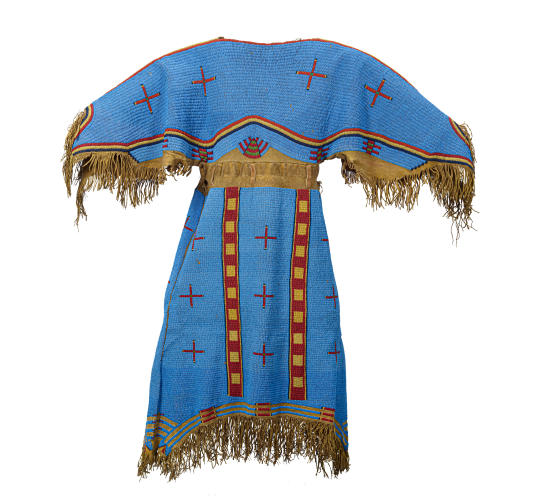
A Lakota (Sioux) fully beaded woman's dress
Sinew sewn, the yoke and skirt each fully beaded on both sides in greasy yellow, white-heart red, green, light and dark blue beads, with fringe along the skirt and about the ends of the sleeves.
laid flat: length 49in, width 64in

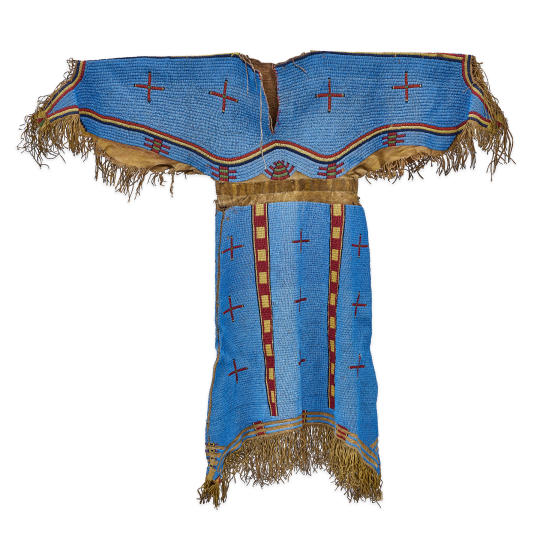

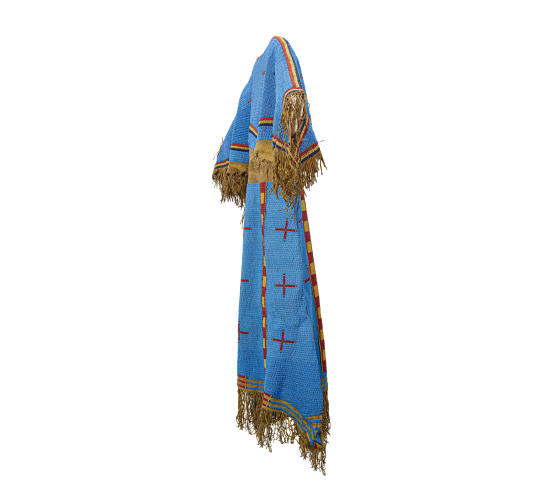
This rare fully beaded dress is very likely the same one once worn by Jenny Yellow Elk Woman, a Sicangu Lakota (Brulé Sioux), and her daughter Julie Nelson, the so-called "Sioux Princess" whose father was John Young Nelson, a scout, interpreter, guide; the family performing in Buffalo Bill's Wild West Show and pictured in cabinet card photographs of the period. In The Plains Indians: Artists of Earth and Sky, Gaylord Torrence discusses another fully-beaded Dakota, Yanktonai or Lakota dress of a similar style: "This rare, fully-beaded dress… is an exceptional example of the elaborate beadwork created during the period, when whole garments and various objects were sometimes solidly beaded"
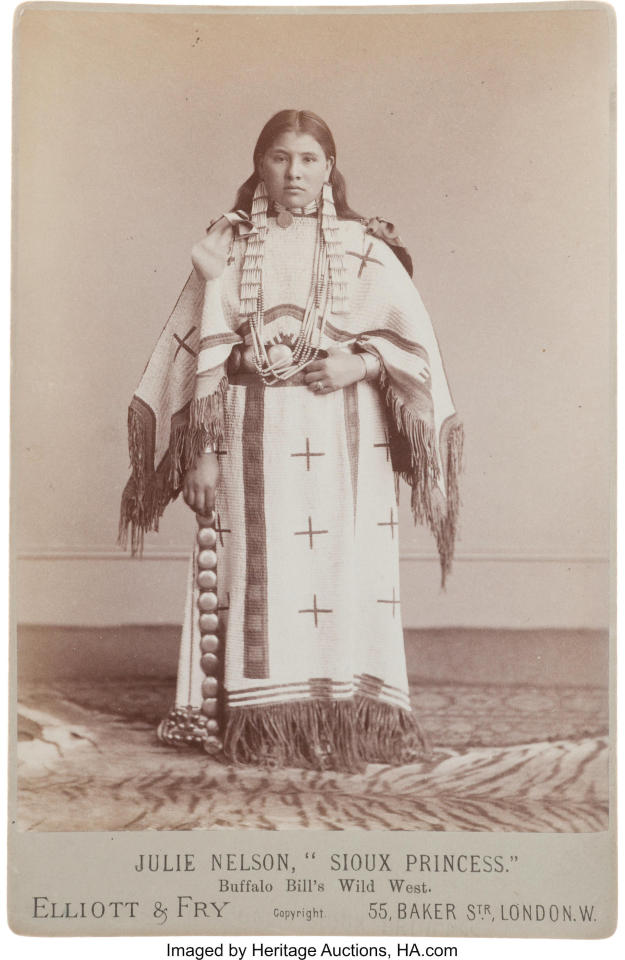
#native american art#native american#native art#indigenous#beaded dress#fully beaded dress#sioux princess#julie nelson#Yellow Elk Woman#John Young Nelson#Artists of Earth and Sky
258 notes
·
View notes